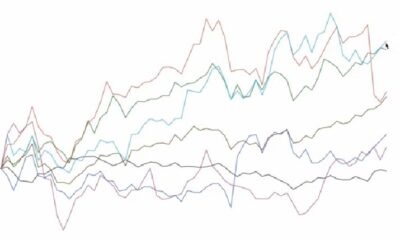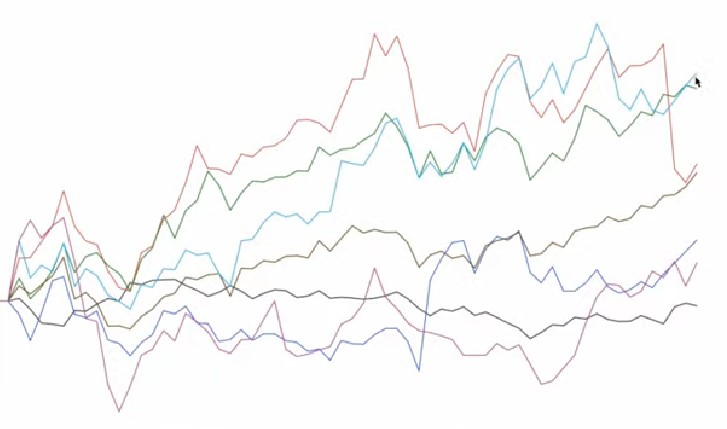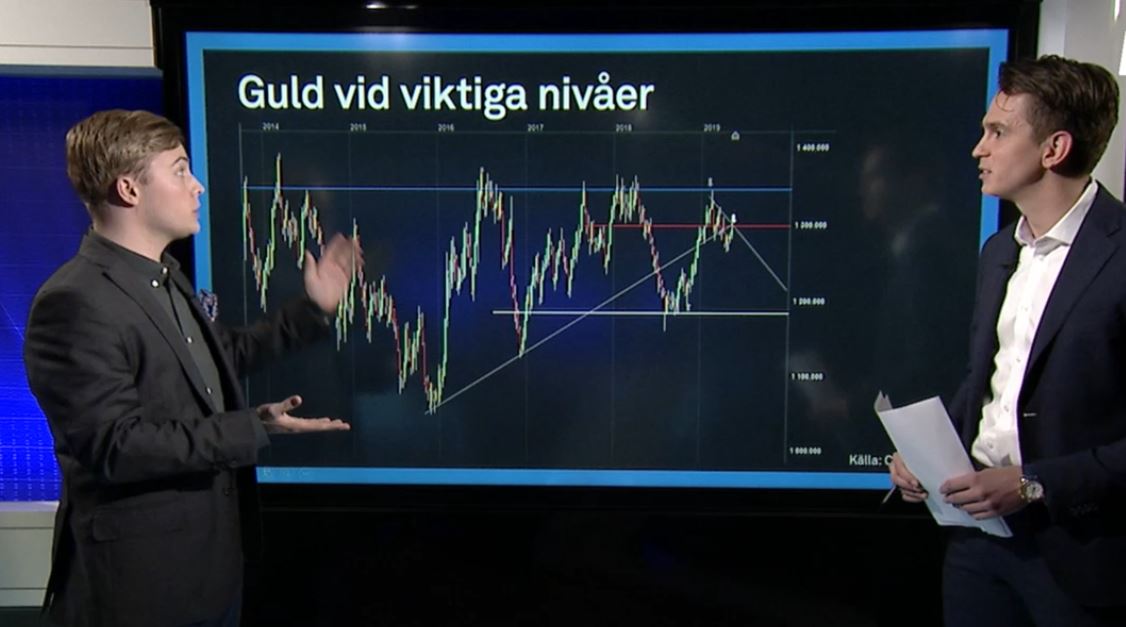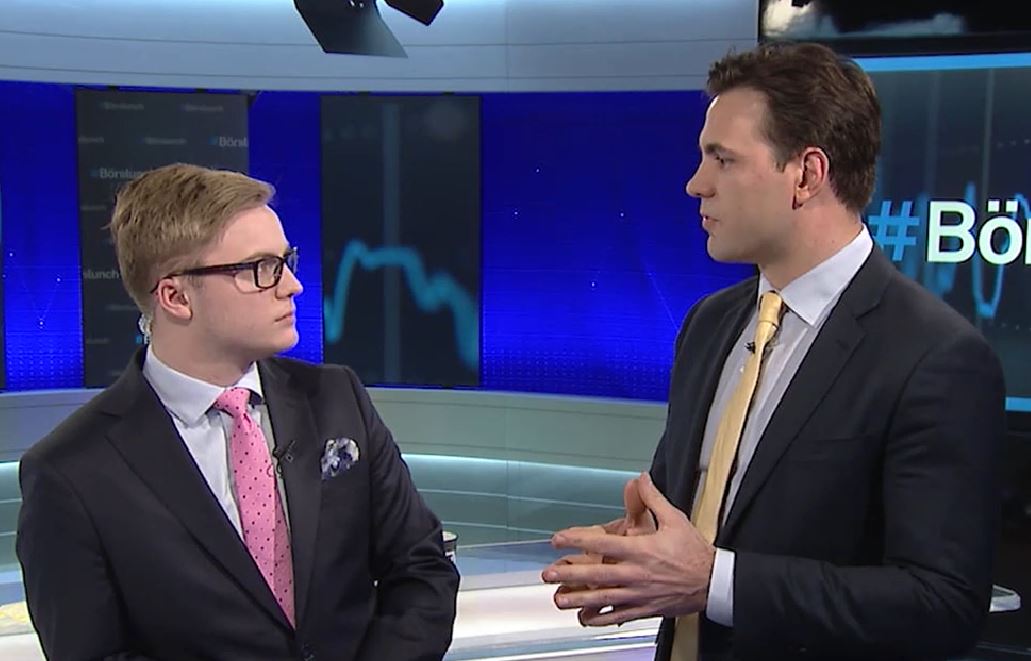Analys från DailyFX
USD/CAD Levels Ahead of NFPs, Canada’s Employment Figures
Talking Points:
– USD/CAD trading above the 1.30 handle in early London trading hours
– US June NFPs firmly in the spotlight as the market seems to await the data for directional conviction
The USD/CAD is holding above the 1.30 handle in early London trading hours, as the market appears to have settled into reduced activity ahead of the major event risk on the docket.
June’s US NFPs are firmly in the spotlight today. The market will want to see if the abysmal May report was a “one-off” or whether there is a clear shift in trend. Volatility seems likely to increase later on.
Taking this into consideration, we look to find short term trading opportunities using the Grid Sight Index (GSI) indicator.

Click Here for the DailyFX Calendar
US Non-farm Payrolls take center stage today. Following the abysmal May jobs report, US rate hike expectations plummeted before completely being priced out until 2018 following the “Brexit” vote. The Unemployment Rate is expected to tick up to 4.8% from the prior 4.7% print, while the headline figure is expected to show a rise of 180K as opposed to the prior weak 38k print.
The market tends to focus on the headline figure, and a revision to the prior print could prove quite significant as well this month to counter/add to pressures stemming from the June figures. The question on participants minds might be if the May figure was a “one-off” or a shift in job growth trend. Wage growth will be in focus as well for possible indication on inflation pressures; but making things complicated could be the US Dollar’s actual response to the data. Renewed USD “safe haven” status following the “Brexit” decision puts a question mark on the “normal” response.
Adding to the potential heightened volatility is June’s Canadian Employment Figures. Unemployment is expected to uptick to 7.0% from the prior 6.9% print. The Canadian economy is expected to show a reduced addition of 6.5k to the workforce from the prior 13.8k figure, and the data could help counter/add to pressures coming from the US numbers.
USD/CAD 5-Min GSI Chart: July 8, 2016

The USD/CAD has managed to hold above the 1.30 handle at the time of writing, and the GSI indicator shows that 48% of similar past momentum events have seen upside movements. The GSI indicator calculates the distribution of past event outcomes given certain momentum patterns, and can give you a look at the market in a way that’s never been possible before, analyzing millions of historical prices in real time. By matching events in the past, GSI describes how often the price moved in a certain direction.
You can learn more about the GSI here.
USD/CAD Technical Levels:

Click here for the DailyFX Support Resistance tool
We use volatility measures as a way to better fit our strategy to market conditions. The market seems likely to remain subdued until the NFP figures, which could induce significant volatility. In turn, this may imply that breakout trades are preferable following the figures.
USD/CAD 30-Min Chart: July 8, 2016
The USD/CAD appears likely to see heightened volatility given the aforementioned event risk. Due to the volatility, the very short term technical levels seem unlikely to have any significance. Taking this into consideration, initial support might be found around 1.2950 followed by a support zone above 1.2920, the 1.2889 level and an area above 1.2867. A zone between the 1.28 handle and the 1.2780 level may prove significant on an outsized move.
Levels of potential resistance on a move higher may be 1.3050 followed by an area around the 1.31 handle, and what looks like a significant resistance zone above 1.3150.
When price reaches those levels, short term traders might use the GSI to view how prices reacted in the past given a certain momentum pattern, and see the distribution of historical outcomes in which the price reversed or continued in the same direction. We generally want to see GSI with the historical patterns significantly shifted in one direction, which could potentially be used with a pre-determined bias as well.
A common way to use GSI is to help you fade tops and bottoms, and trade breakouts. That’s why traders may want to use the GSI indicator when price reaches those specific pre-determined levels, and fit a strategy that can offer a proper way to define risk. We studied over 43 million real trades and found that traders who do that were three times more likely to turn a profit. Read more on the “Traits of Successful Traders” research.
Meanwhile, the DailyFX Speculative Sentiment Index (SSI) is showing that about 52.8% of FXCM’s traders are long the USD/CAD at the time of writing. Retail traders flipped net long June 28 around the resistance zone around 1.3050, and added to longs as price moved down. When price moved higher, longs were being reduced with price peaking with almost exact precision at the “flip” price level.
You can find more info about the DailyFX SSI indicator here
— Written by Oded Shimoni, Junior Currency Analyst for DailyFX.com
To contact Oded Shimoni, e-mail oshimoni@dailyfx.com
Analys från DailyFX
EURUSD Weekly Technical Analysis: New Month, More Weakness
What’s inside:
- EURUSD broke the ‘neckline’ of a bearish ‘head-and-shoulders’ pattern, April trend-line
- Resistance in vicinity of 11825/80 likely to keep a lid on further strength
- Targeting the low to mid-11600s with more selling
Confidence is essential to successful trading, see this new guide – ’Building Confidence in Trading’.
Coming into last week we pointed out the likelihood of finally seeing a resolution of the range EURUSD had been stuck in for the past few weeks, and one of the outcomes we made note of as a possibility was for the triggering of a ’head-and-shoulders’ pattern. Indeed, we saw a break of the ’neckline’ along with a drop below the April trend-line. This led to decent selling before a minor bounce took shape during the latter part of last week.
Looking ahead to next week the euro is set up for further losses as the path of least resistance has turned lower. Looking to a capper on any further strength there is resistance in the 11825-11880 area (old support becomes new resistance). As long as the euro stays below this area a downward bias will remain firmly intact.
Looking lower towards support eyes will be on the August low at 11662 and the 2016 high of 11616, of which the latter just happens to align almost precisely with the measured move target of the ‘head-and-shoulders’ pattern (determined by subtracting the height of the pattern from the neckline).
Bottom line: Shorts look set to have the upperhand as a fresh month gets underway as long as the euro remains capped by resistance. On weakness, we’ll be watching how the euro responds to a drop into support levels.
For a longer-term outlook on EURUSD, check out the just released Q4 Forecast.
EURUSD: Daily
—Written by Paul Robinson, Market Analyst
You can receive Paul’s analysis directly via email bysigning up here.
You can follow Paul on Twitter at@PaulRobinonFX.
Analys från DailyFX
Euro Bias Mixed Heading into October, Q4’17

Why and how do we use IG Client Sentiment in trading? See our guide and real-time data.
EURUSD: Retail trader data shows 37.3% of traders are net-long with the ratio of traders short to long at 1.68 to 1. In fact, traders have remained net-short since Apr 18 when EURUSD traded near 1.07831; price has moved 9.6% higher since then. The number of traders net-long is 15.4% lower than yesterday and 16.4% higher from last week, while the number of traders net-short is 0.4% higher than yesterday and 10.5% lower from last week.
We typically take a contrarian view to crowd sentiment, and the fact traders are net-short suggests EURUSD prices may continue to rise. Positioning is more net-short than yesterday but less net-short from last week. The combination of current sentiment and recent changes gives us a further mixed EURUSD trading bias.
— Written by Christopher Vecchio, CFA, Senior Currency Strategist
To contact Christopher Vecchio, e-mail cvecchio@dailyfx.com
Follow him on Twitter at @CVecchioFX
To be added to Christopher’s e-mail distribution list, please fill out this form
Analys från DailyFX
British Pound Reversal Potential Persists Heading into New Quarter

Why and how do we use IG Client Sentiment in trading? See our guide and real-time data.
GBPUSD: Retail trader data shows 38.2% of traders are net-long with the ratio of traders short to long at 1.62 to 1. In fact, traders have remained net-short since Sep 05 when GBPUSD traded near 1.29615; price has moved 3.4% higher since then. The number of traders net-long is 0.1% higher than yesterday and 13.4% higher from last week, while the number of traders net-short is 10.6% lower than yesterday and 18.3% lower from last week.
We typically take a contrarian view to crowd sentiment, and the fact traders are net-short suggests GBPUSD prices may continue to rise. Yet traders are less net-short than yesterday and compared with last week. Recent changes in sentiment warn that the current GBPUSD price trend may soon reverse lower despite the fact traders remain net-short.
— Written by Christopher Vecchio, CFA, Senior Currency Strategist
To contact Christopher Vecchio, e-mail cvecchio@dailyfx.com
Follow him on Twitter at @CVecchioFX
To be added to Christopher’s e-mail distribution list, please fill out this form
-
Analys från DailyFX9 år ago
EUR/USD Flirts with Monthly Close Under 30 Year Trendline
-

 Marknadsnyheter2 år ago
Marknadsnyheter2 år agoUpptäck de bästa verktygen för att analysera Bitcoin!
-
Marknadsnyheter5 år ago
BrainCool AB (publ): erhåller bidrag (grant) om 0,9 MSEK från Vinnova för bolagets projekt inom behandling av covid-19 patienter med hög feber
-
Analys från DailyFX12 år ago
Japanese Yen Breakout or Fakeout? ZAR/JPY May Provide the Answer
-

 Marknadsnyheter2 år ago
Marknadsnyheter2 år agoDärför föredrar svenska spelare att spela via mobiltelefonen
-
Analys från DailyFX12 år ago
Price & Time: Key Levels to Watch in the Aftermath of NFP
-
Analys från DailyFX8 år ago
Gold Prices Falter at Resistance: Is the Bullish Run Finished?
-

 Nyheter6 år ago
Nyheter6 år agoTeknisk analys med Martin Hallström och Nils Brobacke











